 W
WThe Aljafería Palace is a fortified medieval palace built during the second half of the 11th century in the Taifa of Zaragoza in Al-Andalus, present day Zaragoza, Aragon, Spain. It was the residence of the Banu Hud dynasty during the era of Abu Jaffar Al-Muqtadir. The palace reflects the splendor attained by the Taifa of Zaragoza at its height. It currently houses the Cortes of the autonomous community of Aragon.
 W
WArchaeological Ensemble of Tárraco is inscribed as UNESCO world heritage site since 2000. It is situated in Tarragona.
 W
WAstorga is a municipality and city of Spain located in the central area of the province of León, in the autonomous community of Castilla y León, 43 kilometres (27 mi) southwest of the provincial capital. It is located in the transit between the Páramo Leonés and the mountains of León and acts as the backbone of the shires of Maragatería, La Cepeda and the Ribera del Órbigo. The city is the head of one of the most extensive and oldest dioceses of Spain, whose jurisdiction covers half of the province of León and part of Ourense and Zamora. It is also head of the judicial party number 5 of the province of León.
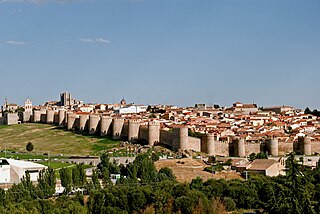 W
WÁvila is a city of Spain located in the autonomous community of Castile and León. It is the capital and most populated municipality of the Province of Ávila.
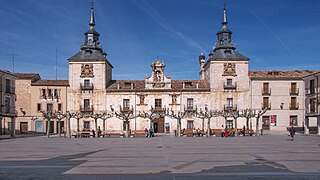 W
WBurgo de Osma-Ciudad de Osma is the third-largest municipality in the province of Soria, in the autonomous community of Castile and León, Spain. It has a population of about 5,250.
 W
WCalatañazor is a municipality located in the province of Soria, Castile and León, Spain. According to the 2010 census (INE), the municipality has a population of 70 inhabitants. The municipality is named after the tiny fortified city on top of a hill.
 W
WThe Way of El Cid is a cultural and tourist route that crosses Spain from the northwest to the southeast, from Castilla to the Mediterranean coast. It follows the history and the legend of Rodrigo Díaz de Vivar, El Cid Campeador, a medieval knight of the 11th century and one of Spain’s greatest characters. El Cid is not only a literary character, also a historical figure.
 W
WCarmona is a town of southwestern Spain, in the province of Seville; it lies 33 km north-east of Seville.
 W
WThe Cathedral-Basilica of Our Lady of the Pillar is a Roman Catholic church in the city of Zaragoza, Aragon (Spain). The Basilica venerates Blessed Virgin Mary, under her title Our Lady of the Pillar praised as "Mother of the Hispanic Peoples" by Pope John Paul II. It is reputed to be the first church dedicated to Mary in history.
 W
WThe Guggenheim Museum Bilbao is a museum of modern and contemporary art designed by Canadian-American architect Frank Gehry, and located in Bilbao, Basque Country, Spain. The museum was inaugurated on 18 October 1997 by King Juan Carlos I of Spain, with an exhibition of 250 contemporary works of art. Built alongside the Nervion River, which runs through the city of Bilbao to the Cantabrian Sea, it is one of several museums belonging to the Solomon R. Guggenheim Foundation and features permanent and visiting exhibits of works by Spanish and international artists. It is one of the largest museums in Spain. In 2020, the museum had 315,908 visitors, down 73 percent from 2019, due to the COVID-19 pandemic. It ranked 73rd on the list of most-visited art museums in 2020.
 W
WJaca is a city of northeastern Spain in the province of Huesca, located near the Pyrenees and the border with France. Jaca is an ancient fort on the Aragón River, situated at the crossing of two great early medieval routes, one from Pau to Zaragoza. Jaca was the city out of which the County and Kingdom of Aragon developed. It was the capital of Aragon until 1097 and also the capital of Jacetania.
 W
WJavier is a town and municipality located in the province and autonomous community of Navarre, northern Spain, with a population of 112. The name is the Romanized form of the original Etxaberri.
 W
WThe United Nations Educational, Scientific and Cultural Organization (UNESCO) World Heritage Sites are places of importance to cultural or natural heritage as described in the UNESCO World Heritage Convention, established in 1972. Spain accepted the convention on May 4, 1982, making its historical sites eligible for inclusion on the list.
 W
WThe Prado Museum, officially known as Museo Nacional del Prado, is the main Spanish national art museum, located in central Madrid. It is widely considered to house one of the world's finest collections of European art, dating from the 12th century to the early 20th century, based on the former Spanish Royal Collection, and the single best collection of Spanish art. Founded as a museum of paintings and sculpture in 1819, it also contains important collections of other types of works. The Prado Museum is one of the most visited sites in the world, and is considered one of the greatest art museums in the world. The numerous works by Francisco Goya, the single most extensively represented artist, as well as by Hieronymus Bosch, El Greco, Peter Paul Rubens, Titian, and Diego Velázquez, are some of the highlights of the collection. Velázquez and his keen eye and sensibility were also responsible for bringing much of the museum's fine collection of Italian masters to Spain, now the largest outside Italy.
 W
WThe National Museum of Roman Art is an archaeology museum located in Mérida, Spain. Devoted to Roman art, it exhibits extensive material from the archaeological ensemble of Mérida, one of the largest and most extensive archaeological sites in Spain, registered as UNESCO World Heritage Site in 1993.
 W
WThe National Museum of Science and Technology is a Spanish technology museum dedicated to technology promotion and preservation. It owns a collection of more than 17,000 scientific instruments, technological devices, vehicles, machines and industrial tools from the 16th century until nowadays.
 W
WThe National Museum of Subaquatic Archaeology in Cartagena (Murcia), Spain is an underwater archaeology museum. It owns a large collection of pieces recovered from shipwrecks that begins in the Phoenician period, and arrives until the 19th century.
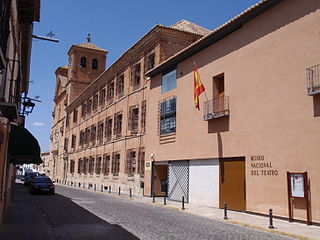 W
WThe National Museum of Theatre in Almagro, Spain is a museum dedicated to the promotion and preservation of Spanish theatre. It owns a large collection of scenic designs and scale models, costumes and costume designs, puppets, drawings, printmakings, paintings, sculptures, photographs, music recordings, programmes and documents from diverse Spanish theatres.
 W
WThe Natural Science Museum of Valencia (Spain) is located at Jardines del Real.
 W
WThe Oscar Niemeyer International Cultural Centre, or Centro Niemeyer, is a cultural centre complex designed by the Brazilian architect Oscar Niemeyer and an international project. The centre is located on the estuary of Avilés, Asturias, in northwest Spain. It was inaugurated on 26 March 2011.
 W
WPedraza is a municipality in Spain, located in the province of Segovia in the autonomous community of Castile and León. It is located at 37 km northeast of the city of Segovia with a population of less than 500.
 W
WThe Friary of La Rábida is a Franciscan friary in the southern Spanish town of Palos de la Frontera, in the province of Huelva and the autonomous region of Andalucia. The friary is located 13 km (8 mi) south of the city of Huelva, where the Tinto and Odiel rivers meet.
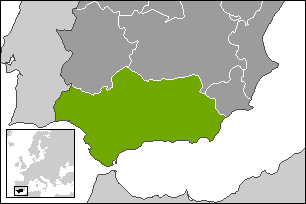 W
WThe Roman Bética Route is an ancient Roman road that passes through fourteen cities of the provinces of Seville, Cadiz, and Cordova in Spain. It runs through the southern part of the Roman province of Hispania and includes territories also traversed by the Via Augusta. On this route are landscapes of geographic and natural interest such as the Natural Park of the Cordovan Subbética, the Bahía de Cádiz Natural Park, and the Valley of the Guadalquivir.
 W
WThe Route of the Borgias is a cultural route, that includes sites associated with the Borja or Borgia, located in their native Valencian Community, Spain. The marketing of the route was inaugurated in 2007.
 W
WThe Route of the castles of Vinalopó is a historic and cultural route in Spain, connecting some of the castles of the province of Alicante, Valencian Community, most of them based in the Valley of Vinalopó.
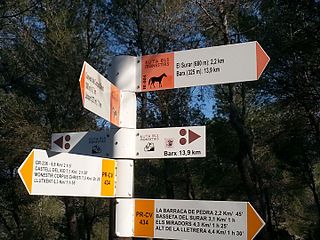 W
WThe Route of the Monasteries of Valencia (GR-236) is a religious and cultural route that connects five monasteries located in central region of the Province of Valencia,, in Spain. The Route was inaugurated in the year 2008.
 W
WThe Route of the Valencian classics,, is a cultural route through the lands of the great classical writers of the Valencian literature of the Valencian Golden Age: Ausiàs March, Joanot Martorell and Joan Roís de Corella, the three related to the court of the Duke Alfonso of Aragon and Foix, "the Old".
 W
WThe Royal Collections Museum is an art museum in Madrid yet to be opened. Dependent on Patrimonio Nacional, it is located in a new building in the gardens of the Campo del Moro park next to the Almudena Cathedral and the Royal Palace.
 W
WSos del Rey Católico is a historic town and municipality in the Cinco Villas comarca, province of Zaragoza, in Aragon, Spain.
 W
WThe White Towns of Andalusia, or Pueblos Blancos, are a series of whitewashed towns and large villages in the northern part of the provinces of Cádiz and Málaga in southern Spain, mostly within the Sierra de Grazalema Natural Park.